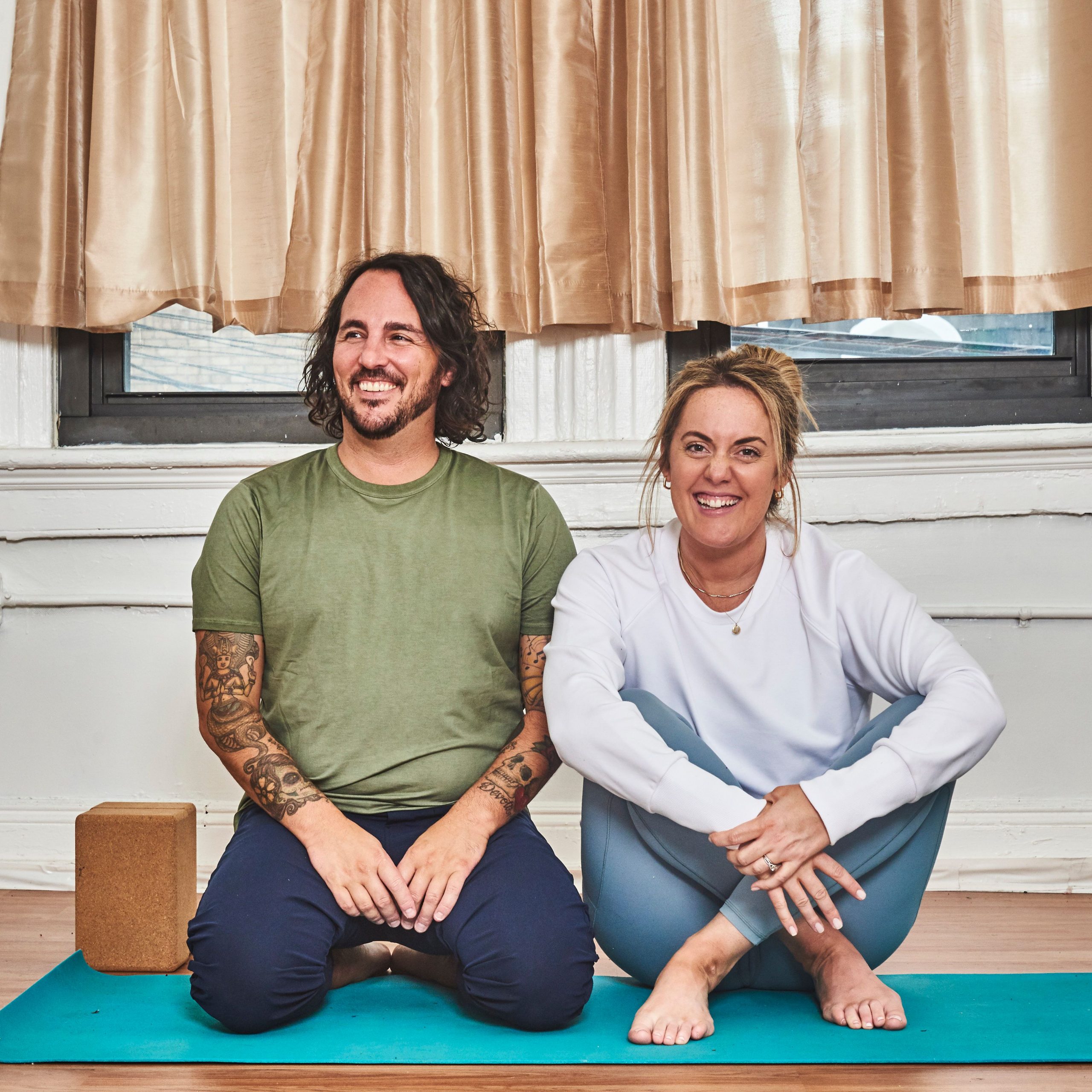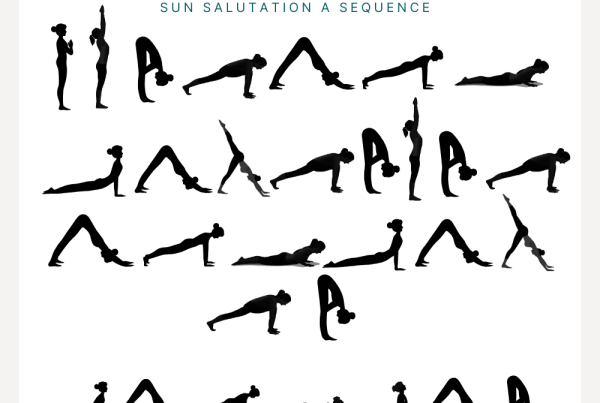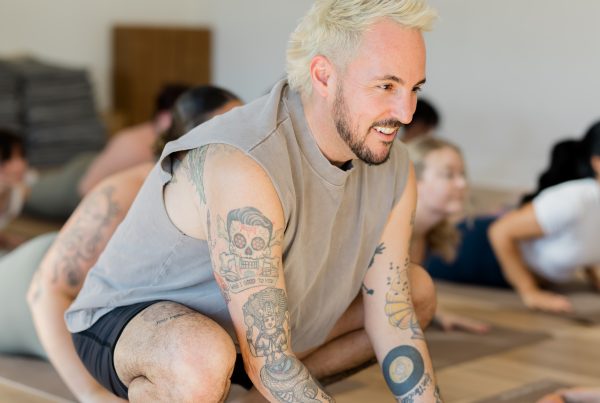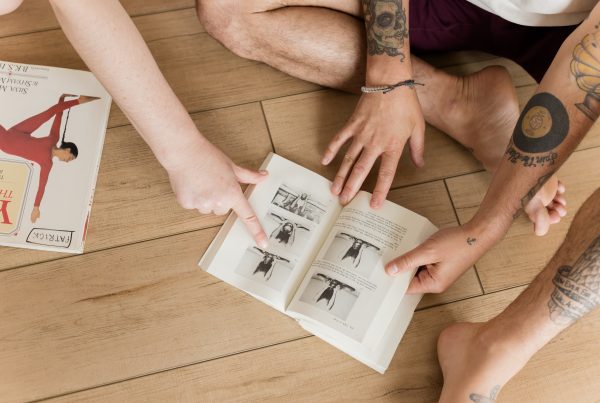
I had a job once that required a one hour commute each way, with eight hours at a desk in between, five days per week. It was a lot of sitting. I wish I had yoga then! Excessive sitting, especially at a desk, in front of a computer, hyper-focused, and very possibly stressed, can result in a lot of discomfort and tension in our bodies. If your job requires you to sit for long periods of time, try out these three yoga poses to reset your body and mind.
Poses To Reset Your Body
 Woman do yoga Downward Facing Dog pose inside of light cozy room through window seen green foliage trees summer landscape morning sun, adho mukha svanasana stronger hands strengthening back exercise[/caption]These postures are also foundational to a more comprehensive āsana practice and worth the extra attention. Practice them often to help counteract the toll sitting takes on your body. And remember to breathe deeply in each shape.
Woman do yoga Downward Facing Dog pose inside of light cozy room through window seen green foliage trees summer landscape morning sun, adho mukha svanasana stronger hands strengthening back exercise[/caption]These postures are also foundational to a more comprehensive āsana practice and worth the extra attention. Practice them often to help counteract the toll sitting takes on your body. And remember to breathe deeply in each shape.
Downward Facing Dog (Adho Mukha Śvānāsana)
While not a full inversion, like Supported Headstand (Sālamba Śīrṣāsana) for example, Downward Facing Dog reverses our innate upright way of being. This posture, wherein the head falls below the heart and the arms and shoulders begin to bear the body’s weight, literally switches up our perspective. The position of our heads in this pose permits only one point of focus: our feet. Our eyes can’t dart around the room, making us prone to all sorts of distractions. In this mild inversion, we’re more inclined to invert our focus as well, to catch a glimpse of the calm beneath the heavy cloud cover of our busy minds.
If set up properly, Downward Dog can actually release stiffness in the shoulders and upper back, which are common sites of stored tension. Begin on your hands and knees. Place your hands slightly wider than shoulder-width apart and spread your fingers. Lift your hips up, lower your chest towards your thighs, and relax your head completely, as if it were weighted. Align your torso and arms so your chest doesn’t dip below your shoulders. Draw your shoulder blades away from one another, engage your chest muscles, and roll your elbows down towards the floor. Notice how your collarbones broaden and the space in between your shoulder blades expands.
Low Lunge (Aṅjaneyāsana)
This is quite possibly my favorite yoga pose of all time. A pillar of Classical Sun Salutations (Sūrya Namaskar), Low Lunge is grounding, strength-building, and lengthens the iliopsoas muscle. The psoas starts in the Thoracic region of the spine (T-12), runs along the lumbar vertebrae, and connects to the top of the femur bone, or thigh bone. Because it links the legs and the torso, the psoas stabilizes the spine, which is important for balance and proper posture. However, this muscle contracts when we sit, and if we sit for long periods of time without movement or stretching, tension in this muscle can sometimes result in lower back pain.
With the knee of your back leg down, frame your front foot with your hands. Place them either on the ground, two yoga blocks, or whatever you have handy. Elevate the chest so the spine is straight and not curved. Now move your hands to the top of your front knee. Take a few deep breaths. Then, lift them overhead for the full expression of the pose. Notice how the position of your arms and torso in each variation changes the intensity of the stretch in your hip.
Garland Pose (Mālāsana)
 This wide-legged, deep squat stretches the lower back and strengthens the legs. This āsana also opens the hips and exercises the muscles of the ankles and feet. It’s all together a very helpful pose for soothing tension in the lower back and improving posture, which can get thrown off from long hours of desk work.
This wide-legged, deep squat stretches the lower back and strengthens the legs. This āsana also opens the hips and exercises the muscles of the ankles and feet. It’s all together a very helpful pose for soothing tension in the lower back and improving posture, which can get thrown off from long hours of desk work.
For this pose, press the soles of your feet into the floor, and engage your lower legs and glutes. Place a prop of sorts underneath your seat, allowing gravity to lengthen your lumbar spine as you relinquish some of your weight to the support of your prop. Press your palms together at your chest. Position your elbows inside your legs, pressing them against your knees. Use this action as leverage to lift your collarbones, sitting taller. If it feels right, remove the prop and practice this pose with your seat hovering over the floor.
When practiced with focused awareness and proper form, yoga āsanas can bring our bodies back into alignment and help to relieve the aches associated with sedentary work. Begin and conclude this mini-flow either standing or seated, close your eyes softly, and take several long deep breaths. With each inhale fill your lungs a little bit more, and with each exhale relax your shoulders away from your ears, releasing tension and stress from your body
Join our mailing list for incredible weekly content!
[convertkit form=5652366]








